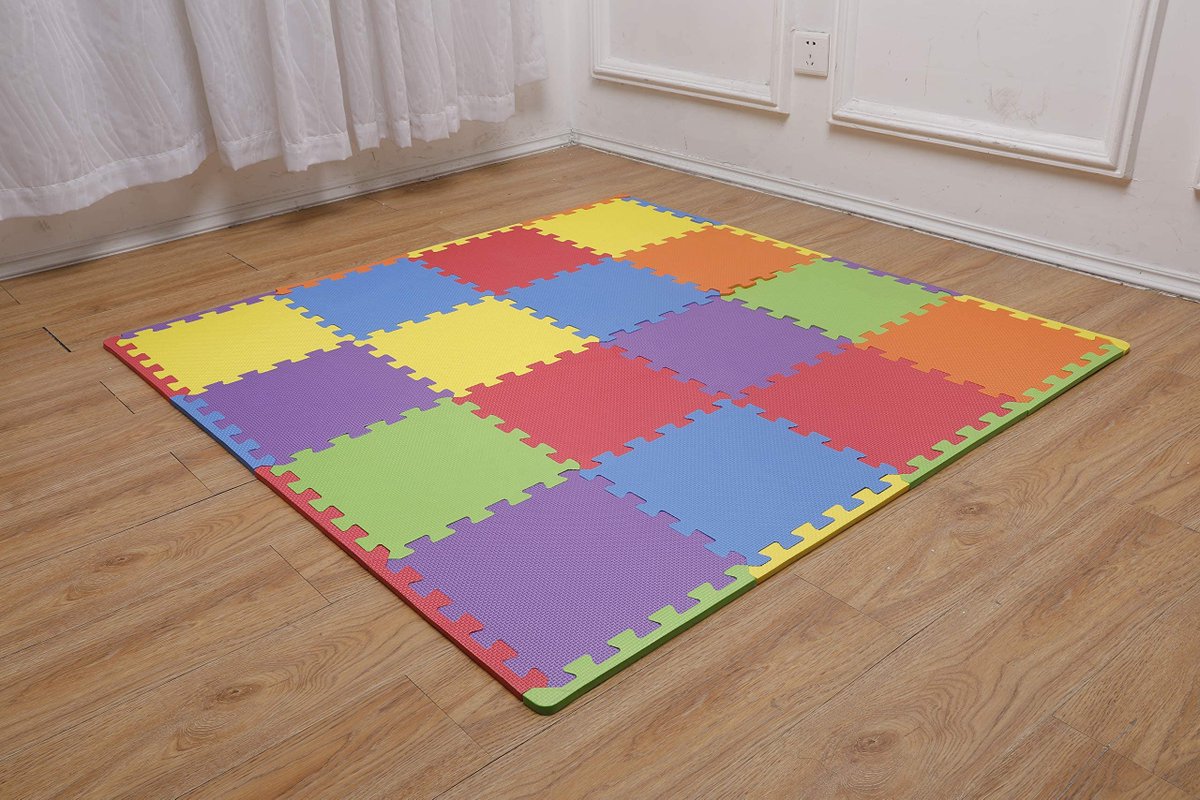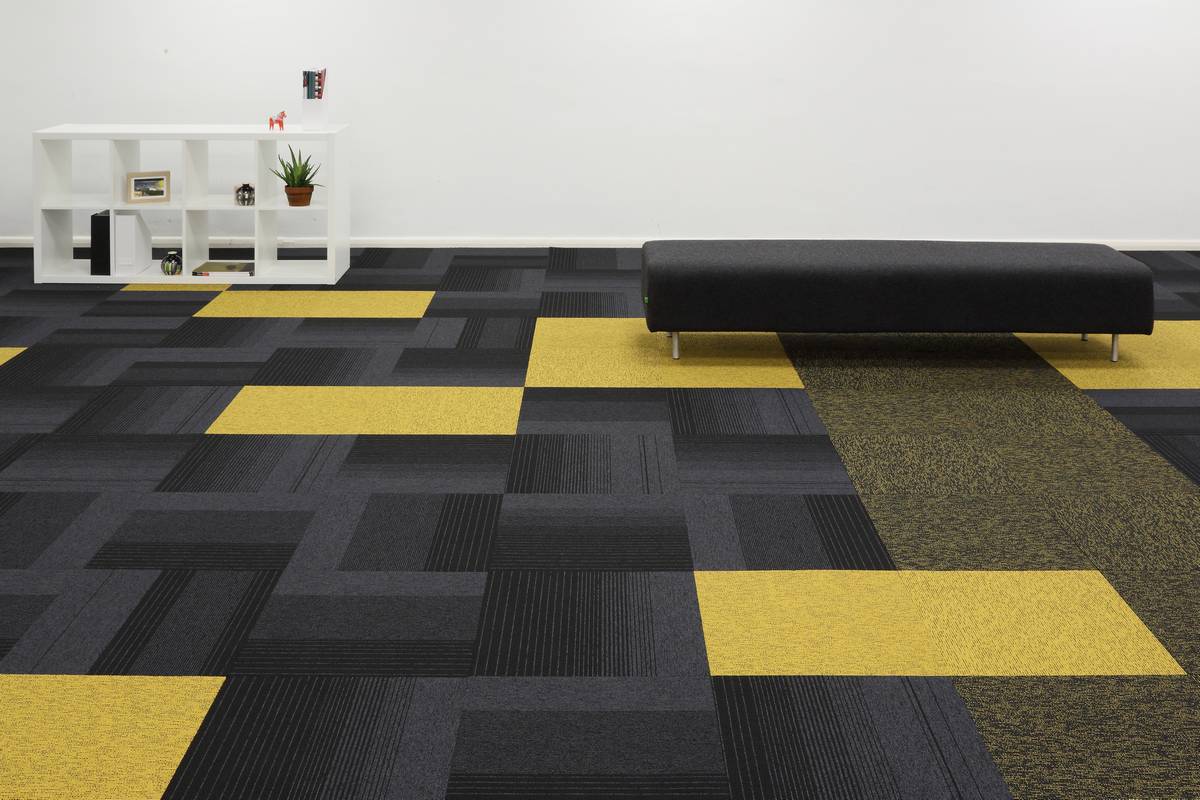In a home gym, a nice set of free weights and other workout machines like a stationary cycle and a rowing machine are frequently essential elements, but a strong foundation is also crucial.
The stress of high-impact exercise can be tempered by the right flooring and best floor tiles, which also protect against damages from heavy equipment and spills weights.
This article will evaluate some of the greatest flooring options available and go into detail about the important things to keep in mind while looking for the best gym flooring. Please continue reading to find out more about our top picks for flooring for home gyms.
What Factors to Consider When Making the Best Gym Flooring Decisions
Knowing which options are suitable for particular activity kinds is vital when choosing the best flooring for a home gym. Material and kind, flooring thickness, size, and texture are other considerations.

Composition and Type
For a home gym, there are several alternatives for flooring, including rubber, foam, hardwood, vinyl, and carpet. Users may be more likely to work out or do yoga on a spotless, polished surface.
The type of flooring can also affect noise, which is important for second-floor home gyms or those who live in upper-level apartments. Safety is also crucial; good padding helps shield joints like the knees and prevents harm from dropped weights.
Rubber: Rubber is commonly used as gym flooring, making it the finest choice for a home gym. It is perfect for high-impact cardio or other demanding workouts because it can both prevent slips and falls and absorb impact.
Rubber flooring is more resistant to denting, scratching, and gouging than foam or hardwood flooring. For smaller places, it comes as mats; for larger rooms or entire studios, it comes in interlocking tile squares. It is, however, one of the most expensive options for flooring in home gyms.

Foam: Foam flooring comes in a variety of sizes and shapes and provides great impact absorption. Although it is considerably less expensive, rubber flooring is not quite as durable. Additionally, replacing old, worn-out tiles with new ones is simple.
Carpet: For home gyms that also serve as living spaces, carpet absorbs impact well and offers joint cushioning.
The best carpets have a low pile (shorter fibers), as they offer grip and shock absorption without posing a trip risk. In addition to conventional wall-to-wall carpeting, it is also offered in less-priced, simple-to-install carpet tiles.
Genuine hardwood flooring is prone to dents and scratches, making it a poor choice for a gym floor.
Vinyl flooring, however, delivers the appearance of hardwood with more longevity.Vinyl flooring has a denser core, so large machinery or free weights won’t easily dent it. Additionally, it resists scratches better and is waterproof.
Some types of vinyl flooring have an integrated underlayment that increases cushioning and makes them suitable for low-impact exercises like resistance band work and yoga.

Dimensions and Thickness
Think about the flooring’s thickness and proportions while choosing the best option for a home gym. Thick flooring is best for high-impact exercises because less shock-absorbing surfaces can be taxing on the joints.
Additionally important for defending your equipment is thickness. Dropping a dumbbell on a hard concrete floor could shatter or chip the floor as well as harm the weight. Low-pile carpet is typically 1/8 inch thick, while foam and rubber flooring are often 3/8 inch thick.
Think about the range of motion needed for a thorough workout. The entire training space should, at the very least, be covered in flooring.
Texture
Many workouts, like weightlifting, yoga, and Zumba routines, call for stable feet in order to be efficient and secure. Too much slipping and falling can happen as a result of slippery floors.
Athletic shoes may easily grip the surfaces of rubber and foam flooring. To encourage good grip, low-pile carpeting frequently features a modest ribbed pattern. Although the surfaces of hardwood and vinyl are smoother, these gym floors offer good traction for athletic shoes with rubber soles.

ProsourceFit Exercise Mat with Puzzles
These ProsourceFit high-density foam training tiles are 12-inches thick, have a considerable thickness, and are simple to install. They offer lots of impact absorption to protect joints during high-impact workouts and give dumbbells or free weights a soft place to land. Each tile has a relief design on its surface that creates a nonskid surface for a stable base for exercise.
This floor is quite simple to install because of the interlocking pattern on all four sides of each square tile. The outer margins of the exercise area have a polished appearance thanks to strips that give the tile smooth ends. The tiles come in sets of 24, 48, and 144 square feet and measure 24 by 24 inches each.
We offer multi-purpose exercise floor mats for sale.
The cost of a home gym can add up quickly, but We Sell Mats’ adaptable foam mats provide an affordable flooring option. Each tile measures 24 inches by 24 inches and is 3/8 of an inch thick, providing padding for exercises like weightlifting and Zumba. The foam tiles have interlocking ends on all four sides, making them simple to install and enabling them to be linked to fit various-sized training rooms.
Each of the foam tiles has completed ends, giving the workout area a tidy appearance. Exercise cleaning is simple: To remove sweat, clean the foam mats with soap and water. These tiles can be found in 17 different colors, so they go with just about every color scheme used in exercise rooms. We Sell Mats tiles are sold in sets of six, twelve, and twenty-five.

Rubber Flooring with Heavy Duty from American Floor Mats
Rubber flooring typically costs substantially more than alternative flooring types, but it offers unmatched durability and shock absorption. These 3/8-inch thick, 24 by 24-inch rubber floor mats offer great shock absorption. The rubber is thick enough to support the weight of exercise equipment as well as the shock of falling dumbbells.
Each square utilizes an interlocking technology that requires no adhesive and is simple to install. A finished appearance is produced by the center, border, and corner tiles. Four tiles from each set may cover a space of 16 square feet.
Pebble Path Peel-and-Stick Carpet Tile Carpeting looks beautiful in rooms that double as living spaces, offers joint cushioning, and offers decent grip with athletic shoes. However, not all carpet varieties are appropriate for home gyms. This Pebble Path carpet has a 0.3-inch pile height, which makes it low-pile and less likely to trip people. It absorbs impact.
Additionally, it has an indoor/outdoor rating and is made of solution-dyed polyester, which makes it stain, mold, and mildew resistant. Additionally, the carpeting’s Natural Touch components are created entirely from recycled bottles, and the Dura-Lock fiber locking technology ties the components together for strong durability. This option can be laid over your current flooring and gives grip thanks to the ribbed texture on the top of the carpet.











Your comment submitted.